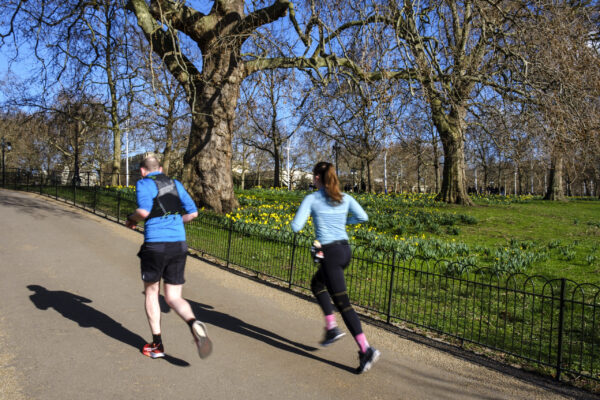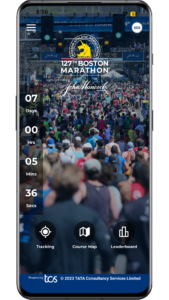Running a marathon is a challenge that can make you feel like a real Marvel superhero. However, it requires careful planning and a lot of training to get ready for a marathon. It’s the jogger’s apprentice test and many of us benefit from the excellent shape for other running challenges afterward. So, let’s look at How To Run A Marathon – The 10 Best Preconditions.

When you complete a marathon project, you learn a lot about yourself, your strengths and weaknesses, and how you overcome your limitations. You work with motivation, commitment, purpose, and self-discipline. These experiences and qualities will later strengthen you in many other areas of life if you choose it.
Get A Health Check Before Your Marathon Project
Marathon races and marathon training will be a hard load mentally and for the body. When you run 42.195 kilometers, you are at risk of injuries – especially if you are not physically prepared, well trained, and mentally ready for the challenge. Being ready at the starting line is the real achievement.
So, if you have injuries, small defects, or illnesses that might influence the training, talk to the doctor or a health professional first. The health benefits after completing your marathon project, on the other hand, are enormous, particularly for people over 50 years of age.

Marathon training has many benefits such as strengthening breathing, weight loss, bones, muscle strength, balance, energy, mood, and quality of life. The marathon project can also be your very best prescription for a healthy life.
Increase Your Training Volume Gradually
You have probably heard the expression “It’s a marathon, not a sprint”. One of the frustrating ways to get a marathon injury is by trying too much too fast in your training sessions and trying to raise the training volume in the weeks up to race day because you think you’re behind the schedule as I did in one of my earlier marathons – because I got nervous. But with the right strategies, you can optimize your training results.
Start by doing a few training routines that are easy to perform. Use basic running programs, and choose the same or a few running routes. Then it will be easier for you to register the development. Most running novices spend ½ – 1 year building up their shape and the monthly mileage before taking on the main challenge.
Over time, you begin creating a good habit and making training a regular part of everyday life – it becomes easier and less complicated to train. At the beginning of training for a marathon race, it’s more important to put distance before speed. Once you have a good foundation with a good running pace, you can start to improve your running times.
Set Up Smaller Milestones On The Way
It is more important to be persistent in your training and thus be able to train for a long period than to train hard for a few months and then drop out. Regular training allows the body to develop gradually towards the ‘milestones’ – shorter distances you should complete along the way.
With training for ½ – 1 year or more, running can quickly lose its appeal if you don’t have any milestones and goals to achieve along the way. A good way to keep your training consistent, interesting, and focused is to set small goals by running several smaller runs that slowly increase over time.
For example, start by participating in 3 – 5 kilometer races and progress with 7 – 10 – 15 km to a half marathon. In this way, you also get used to running official public races with the great atmosphere that surrounds these events.

So, you divide a longer marathon period into small manageable milestones, thereby making it easier and more fun. You also get a status on where you are in the marathon process – is the progress as it should be, or does the plan need to be adjusted?
Recovery Between Training Sessions
The need for recovery increases with the intensity of the training, so the frequency of training depends on the need for recovery. To improve your shape, it is therefore important to carry out the training appropriately and to be careful with over- or under-training.
You should not run too slowly, as it can be a waste of time, but not too fast either. A certain pace is needed – training stimulus to create a reaction in the body. The adaptation that occurs in the body as a result of training will not take place if the pace is too slow.
Conversely, you move towards an overtraining state if the pace is too high. So, you should find a realistic routine of training ex. every other day. You can test your status by measuring the resting heart rate every morning – is it too high compared to usual?
The Long Runs LSD In Your Weekly Training Plan
To improve endurance, you need to run long and slow LSD – Long Slow Distance. Both the pace and the length of the distance you run depend on your basic shape. You must also adapt the training distance to the distance you have to compete- or complete a race with, which is a marathon here.
So, when the goal is to complete a marathon, it is not enough to train at distances up to 10 – 15 km. As a beginner, the majority of your marathon training will consist of shorter, more frequent runs, but the weekly long runs should be completed 1-2 times, allowing your body to gradually get used to running on the road for longer periods.
Thus, the long runs will be the most demanding training sessions for you, so put them as the last one(s) you do each week and give yourself the necessary rest afterward – I used to run the longest distance on Sundays with my running buddies.
Get Plenty Of Carbohydrates In Your Diet
When you train a lot, it is important to ensure that you get enough carbohydrates in your body – especially before you go out for long distances. Carbohydrates are the body’s most important source of energy during long-distance running.

When carbohydrates are consumed either as food or liquid, they are either used immediately to cover a current energy need or stored in the muscles and liver as glycogen. For muscles, glycogen is the preferred energy source for high-intensity work (>60% of max. heart rate). At lower intensity, the muscles predominantly use fat as an energy source.
There are mainly three energy systems in the body. The ATP system is used for fast, explosive activities such as sprinting. The lactate system is an anaerobic system that can generate energy in the short term. The third system, the aerobic system, is primarily used in distance running, and it relies on various other processes to provide the body with a steady supply of energy.
All three energy production systems are to a greater or lesser extent dependent on glycogen and blood sugar, even if they do not utilize it directly. The glycogen stores are relatively limited and, without further intake of carbohydrates, will be depleted after about one and a half to two hours of high-intensity training.
Therefore, it’s a benefit to eat a snack, energy drink, or the like with plenty of carbohydrates before each run and a carbohydrate-heavy meal when you get home to replenish glycogen stores. For longer runs, consider keeping some high-glucose energy gels in your pocket to keep you going if you get tired on the run.
Review Your Selected Marathon Race Route
Take a careful look at your marathon route before you start training. Find the route on the race’s official website – download the race’s app on your mobile. If possible, review the route on a bike.

What kind of surface should you run on? Is it a hilly route or is it flat? What kind of weather can you expect? In this way, you can prepare more carefully for your marathon race. If there are hills on the route, consider that in your training by either finding a hill outside or using the incline feature on the treadmill in the gym.
If you train on trails most of the time, it will feel completely different if your marathon occurs on asphalt. Be sure to practice running outside on surfaces that resemble the race route, so you can prepare your body for possible terrain and weather conditions on race day.
Use the Right Marathon Training Gear
Running a marathon loads your body as mentioned, so it’s important to make sure you’re dressed as comfortably as possible, meaning with breathable materials that are soft against your skin. You must use clothes that form the basis of an optimal fit, and have functional and protective properties as well as great durability. Use the 3-layer system to regulate body temperature. You can choose your clothes for marathon training as below:
- Breathable running clothes, so your excess heat can evaporate.
- Quick-drying running clothes, so you quickly regain optimal running conditions.
- Sweat-wicking running clothes, so you feel comfortable and the body is ventilated and dry.
- Light, flexible running clothes that don’t restrict you and can be tucked away in a pocket during your running training.
- Stretchy running clothes with flat seams that don’t get in the way but always adapt to your body’s movement pattern.
Never use untried gear on race day. If you e.g. put on a brand new pair of running shoes on race day, you run the risk of blisters because your shoes haven’t adjusted to your feet yet, or your new singlet/t-shirt causes your nipples to bleed from the friction over several hours of running.

The same applies to socks, leggings, shorts, sports bra, t-shirt, vest i.e. everything you intend to wear on race day. When running 20+ km, you should also practice your fluid and energy intake. So try it and find your preferences.
Also find out which running shoes and which clothes you like and prefer, as well as which routines concerning diet, sleep, toilet, etc. that work for you. A marathon is long and requires thorough preparation of a different kind than running 10 km.
Marathon Training Phases – Overview
Basic Training
This is the most important phase. It’s about stability, routine, and mileage. As a starting point, the goal is to achieve a basic shape with 27 – 30 km runs per week. You’ll slowly get your body used to steady running and thus increase your physical capacity.
Easy runs are the most important factor in any marathon training plan, whether you are a beginner or experienced. This is where your joints, muscles, and tendons start to develop to be strong, able to run long distances and withstand the stress you put on your body during a marathon.
The pace should be adjusted to ‘talk pace’, and should be 45 seconds – 1 minute below your 10 km pace. Afterward, you should feel tired and a little worn out but also feel that you could have run a little longer.
Specific training
You become good at what you train, and training works specifically. When it’s about marathon training as a beginner, it’s important in specific training, to raise the training volume to 35 – 40 km a week, get used to the many kilometers, and adapt the body’s tissue to the load. At the same time, you can start adding, tempo runs, and short intervals, to your program – but don’t overdo it.
Tempo runs
As a beginner, it’s not strictly necessary to run tempo runs, but if you want a little variety and challenge, you can add a tempo run into the weeks if you feel you can. Tempo runs are not an exercise in running fast, but in finding the pace you aim to run in your marathon.
Start with a few kilometers of warm-up and run e.g. 3-5 kilometers at a gradually higher pace, where you could have a conversation along the way. Finish with a few kilometers at your easy pace, and give yourself at least a day’s rest before running again.
On tempo runs, you often run around 70-80% of the distance you train for. At the same time, you should run about 10 seconds slower per km than your desired finish time for the race you are training for. Tempo runs are meant to be hard but without completely exhausting yourself.
Interval running
If you feel you are ready for it, there may also be room for intervals in the program. However, intervals primarily improve speed – running faster, so they are not a must to complete a marathon, and certainly not when it’s your first marathon.
If you run intervals, do it only once a week. Focus on the number of minutes, not the distance. Start e.g. with 4 x 2 minutes with a 1-minute pause in between and work your way up in number of minutes to e.g. 5 x 5 minutes with a 1-minute pause in between.
Your interval pace should be slightly higher than your tempo runs, i.e. the pace you would run the marathon at, which is about 90% of your maximum pace.
Marathon Tapering Period
About 3 weeks before the race day when you run the longest distances in your LSD races, you are in the marathon tapering period, where the training is downscaled. In this way, you can be fresh and recovered in your legs for the race day.

Marathon Training Program
The purpose of a marathon training program is to get your body used to the load of running and avoid injuries. When the program is adapted to your current running level, you also ensure progression in the course and can measure whether the results are as expected. Your training becomes manageable, you have a clear plan and you can be sure of reaching your goal.
So, as a blueprint, you should find your current running level. To give you a starting point, you are a beginner – if you can run a maximum of 10 km, with training 2-3 times a week, Easy experienced if you can run between 10 – 15 km with training 3-5 times a week and experienced if you can run more than 15 km with training 5 times a week.
Perform test runs during the training course to find out if you are where you need to be or if the program needs to be adjusted. When you follow a training plan, a running community can give structure to the training and extra motivation when the runs are long or the days are dark.
Many running communities offer training up to a marathon. Search the web for running communities near you or check on your chosen marathon race’s official website.
Final Thoughts
Your goal as a beginner should not be to get under a certain time. Aim to complete the race, manage your energy on the route, and get a good experience. Remember a marathon is called the jogger’s apprentice test and being ready at the starting line is the real achievement. But also be aware of your limits.
I hope you get something out of this post. If you have any questions about the topic or want to leave your review, please leave a comment below.






Hey Henrik,
This post on running a marathon is an excellent resource for aspiring and experienced runners. The detailed guide takes us readers through every step of the marathon journey, from training plans and nutrition tips to pacing strategies and mental preparation.
Your deep understanding of the subject matter provides us with practical advice backed by your expertise. Whether you’re a beginner or aiming to improve your marathon performance, this post offers invaluable insights to help you reach your goals. Well done!
Marios
Hey Marios
Thank you for the comment – and your fine insights about the subject.
Best regards Henrik
For individuals who are eager to take on the challenge of running a marathon, this article seems to provide comprehensive guidance. It most likely covers a variety of topics related to training for a marathon, such as creating a training plan, building endurance, and preventing injuries. Both novice runners training for their first marathon and seasoned runners looking to improve their time may find this information useful. I appreciate you sharing such a thorough and well-written essay. In addition, how can runners stay motivated during their preparation and what are some coping mechanisms for the psychological and physical demands of running a marathon?
Hi Kiersti
Thank you for the comment.
To stay motivated in the preparation you can consider to:
1. Plan your training at the time of the day when you know your motivation is best
2. Try to create a good habit – coping mechanism – and make training a regular part of everyday life, then it will be much easier and less complicated to train.
3. Find a training partner – “Marathon Training Buddy”. Fixed appointments with another person keep you stuck in your runs.
Best regards
Henrik
Wow, stumbled upon your marathon article, and I’ve got to say, it’s like finding a gold mine for aspiring runners like me! Your breakdown of marathon training essentials is so thorough and easy to follow. I love how you dive into the importance of proper nutrition and pacing – it’s like having a seasoned coach right by my side.
I ran the L.A Marathon in 2008, my one and only marathon. It took me 5 hours and 21 minutes to finish but I finished. Everything you said makes perfect sense.
Your tips on avoiding common pitfalls are spot on! But I’m curious, how do you suggest balancing training intensity with rest days? I often struggle to find that sweet spot where I’m pushing myself enough without risking burnout. Also, any favorite pre-race rituals you swear by? Keep up the awesome work, can’t wait to lace up and hit the pavement with your advice in mind!
Hi Bob
Thank you for the comments and your questions.
The training intensity can be planned into your program so you don’t have 2 hard training sessions in a row, but e.g. a rest day and then an easy jogging day after a hard training session.
You can test the body’s reaction to the training by measuring your resting heart rate in the morning when you wake up and comparing the result with previous measurements.
If your resting heart rate the day after a training session is abnormally high – e.g. 5 – 8 beats more than usual, it’s often because the body has not sufficiently recovered.
Rituals are very personal. In the starting area before a race, you can sense it – some runners talk a lot with each other, others are more nervous, withdrawn, and focused. I believe your focus is a keyword here.
Best regards
Henrik